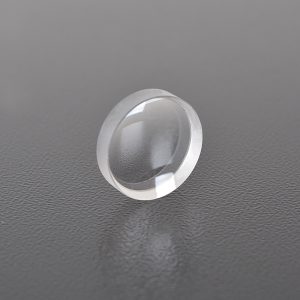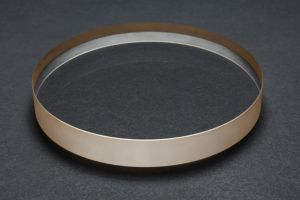
Traffic Flow Monitoring Filter Analysis
Traffic flow monitoring is an important part of modern intelligent transportation systems, which aims to obtain real-time information about vehicles and pedestrians on the road to optimize traffic management and improve road safety. Optical technology plays a key role in traffic flow monitoring, and the performance of filters as one of the core components in the optical system directly affects the accuracy and reliability of the monitoring system.

1. Working principle of traffic flow monitoring
The traffic flow monitoring system captures vehicle and pedestrian information on the road through optical sensors and extracts traffic flow data using image processing and analysis algorithms. Common technical solutions include camera monitoring, LiDAR, infrared sensors, and photoelectric sensors. These systems detect the position, speed, and number of target objects by emitting and receiving light signals, thereby achieving real-time monitoring of traffic flow.
2. Optical path system
The optical path system is the core part of the traffic flow monitoring equipment, responsible for the transmission and processing of optical signals. A typical optical path system includes the following parts:
1. Light source: emits light signals of specific wavelengths, such as visible light, infrared light, or laser.
2. Optical lens: focuses and collimates light signals to ensure accurate transmission of light.
3. Filter: Filters unnecessary light bands to improve the signal-to-noise ratio.
4. Detector: Receives and processes light signals and converts them into electrical signals for subsequent analysis.
3. Types of internal filters
Filters play a key role in traffic flow monitoring systems. Common types of filters include:
1. Bandpass filter: Only allows light of a specific band to pass through, commonly used in lidar and infrared sensors.
2. Long-wave pass filter: Allows light longer than a certain wavelength to pass through, suitable for infrared monitoring.
3. Short-wave pass filter: Allows light shorter than a certain wavelength to pass through, suitable for visible light monitoring.
4. Neutral density filter: Uniformly attenuates light intensity to prevent detector oversaturation.
4. Application band
The application band of the filter depends on the needs of the monitoring system. Common bands include:
1. Visible light band (400-700 nm): used in camera monitoring systems to capture images of vehicles and pedestrians.
2. Near infrared band (700-1100nm): used for monitoring at night or under low light conditions to improve imaging effects.
3. Mid-infrared band (3-5 µm): used for infrared sensors to detect thermal radiation from vehicles and pedestrians.
4. Far infrared band (8-12 µm): used for long-distance infrared monitoring, suitable for large-scale traffic flow monitoring.
5. Related parameters
The performance of the filter is determined by multiple parameters, mainly including:
1. Center wavelength (CWL): the center wavelength of the light band passed by the filter.
2. Bandwidth (FWHM): the width of the light band passed by the filter, usually expressed as full width at half maximum.
3. Transmittance: the efficiency of the filter to transmit the target band, high transmittance means higher signal strength.
4. Cut-off depth: the filter’s ability to suppress non-target bands, high cut-off depth means better anti-interference ability.
5. Angle of incidence: The response characteristics of the filter to light at different angles of incidence affect the stability of the optical path.
6. Application characteristics
The application of filters in traffic flow monitoring has the following characteristics:
1. Improve signal-to-noise ratio: By filtering ambient light and light signals in non-target bands, the signal-to-noise ratio of the monitoring system is significantly improved.
2. Enhanced accuracy: Accurate light band selection enables the monitoring system to more accurately identify and track target objects.
3. Adapt to a variety of environments: Filters of different bands enable the monitoring system to work under various lighting conditions, such as daytime, nighttime and bad weather.
4. Extend equipment life: Filters protect detectors from damage by strong light and harmful radiation, extending the service life of the equipment.
Filters play a vital role in traffic flow monitoring systems, and their types, application bands and related parameters directly affect the performance of the monitoring system. By rationally selecting and optimizing filters, the accuracy, reliability and adaptability of traffic flow monitoring can be significantly improved, providing strong support for the development of intelligent transportation systems. With the continuous advancement of optical technology, the application prospects of filters in traffic flow monitoring will be broader.
Hanzhong Brisun Optics Co., Ltd. Is the high precision optical element manufacturer provides customized production of Various optical lenses, including spherical lens, cylindrical lens, optical window, mirror, prism, filter, metal base mirror and other high-precision optical elements. The base materials include various optical glass, fused quartz, calcium fluoride (CaF2), zinc selenide (ZnSe), germanium (GE), silicon (SI), sapphire, metal and other materials. And provide antireflective film, high reflection film, spectroscopic film, metal film and other optical coatings.
Welcome to OEM and Purchasing!


